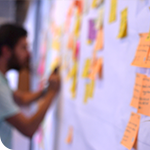
As part of our Lean journey here at SSOE, we’ve been working to employ the Kanban Method at the discipline department level, taking a narrow and deep approach to implementation as our first step toward tackling it as an organization. More than just a to-do list, the Kanban Method—often used synonymously with the pull system tool used to employ it—is an organizational approach to incremental, evolutionary change originally created by software pioneer David J. Anderson. It allows project teams to more effectively visualize their work in order to speed up the flow of that work. This is done by breaking work down into a manageable, commitment-based plan that is driven by the team as a whole, moving away from “my work” and moving toward “our work”.
Although the Kanban Method aligns with SSOE’s 6 Lean Principles in various ways, here we will focus on the following four: respect for people, continuous improvement, generating value, and focusing on flow.
Respect for People & Continuous Improvement
While first employing the Kanban Method, project teams are learning an important part of respecting people is to start where you, as a team, are now—understanding current processes as actually practiced. It’s human to resist change, but by starting where the team is at currently fosters an ideal environment for change to take place because the team as a whole is driving it. This respect continues as project teams work to improve their workflow, making sure they’re creating explicit boundaries that are understood by all while avoiding any behavior that may make people feel demoralized or devalued. Instead, the objective is to help individuals exercise increasingly more autonomy—acting independently, but responsibly—to increase confidence and reduce burdens. The kanban board, a pull system tool used to employ the Kanban Method, helps our project teams manage the work, but gives people the freedom of self-organizing around it while simultaneously making small, incremental improvements along the way.
How this translates to our clients is an increase in reliability as it relates to the schedule, resource planning, and estimating. In addition, we are more efficient on projects, which positively impacts our client’s bottom line. Relationships among our partners are more stable, which improves project results both now and in the future, and our focus on continuous improvement decreases instances of rework and waste, allowing us to deliver a better product at a lower cost.
Generating Value & Focusing on Flow
In both the design and construction phases of a project, we’re able to deliver more value when all parties are brought together for detailed planning sessions. It is in these sessions that individuals make specific commitments to the other design, construction, and owner team members.
At the project level, this is accomplished using pull planning, which is focused primarily on interdisciplinary commitments; conversely, the Kanban Method accomplishes this at the design discipline level. A Lean approach to managing and improving work and workflow by balancing demand with capacity, Kanban focuses on the discipline work necessary to deliver value to our clients.
The kanban board allows the team to visualize ongoing work and current workflow, along with the ability to quickly convey the status of work and where resources are allocated without studying. One of the core properties of the Kanban Method, limiting work in progress (WIP), lets the team manage process in a way that creates a smooth workflow and prevents overloads. The Kanban Method helps teams maintain those WIP limits in various places on their board, which typically results in shorter lead times.
Generating value and focusing on flow through the Kanban Method results in us saving our clients time, trouble, and money—our mission statement. Kanban increases the sense of urgency and gives us a better handle on our workflow, so that we’re able to provide the flexibility to change as our clients’ and partners’ needs change. It also asks the team to focus on value through the lens of the client, which becomes increasingly clear through the life of the project.
Learn more about how we’re implementing the 6 Lean Principles as an organization here.
